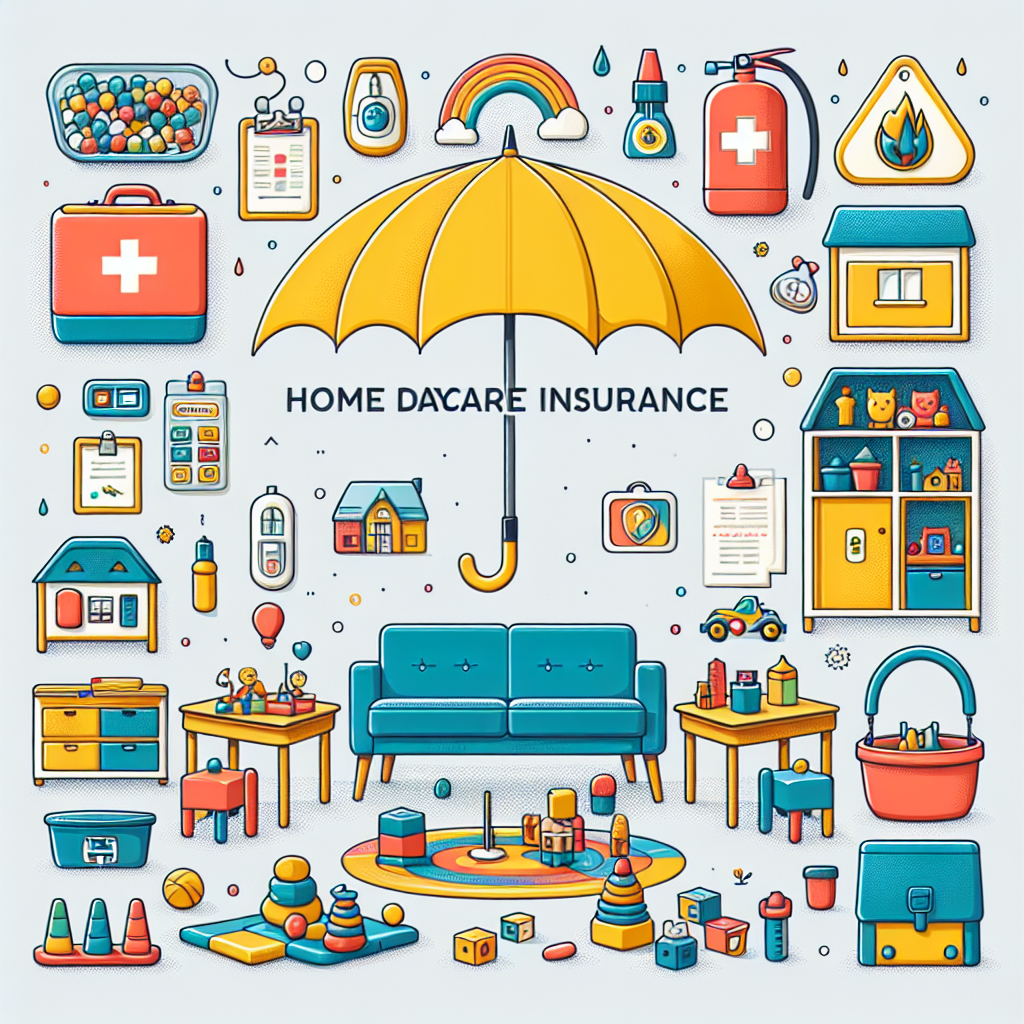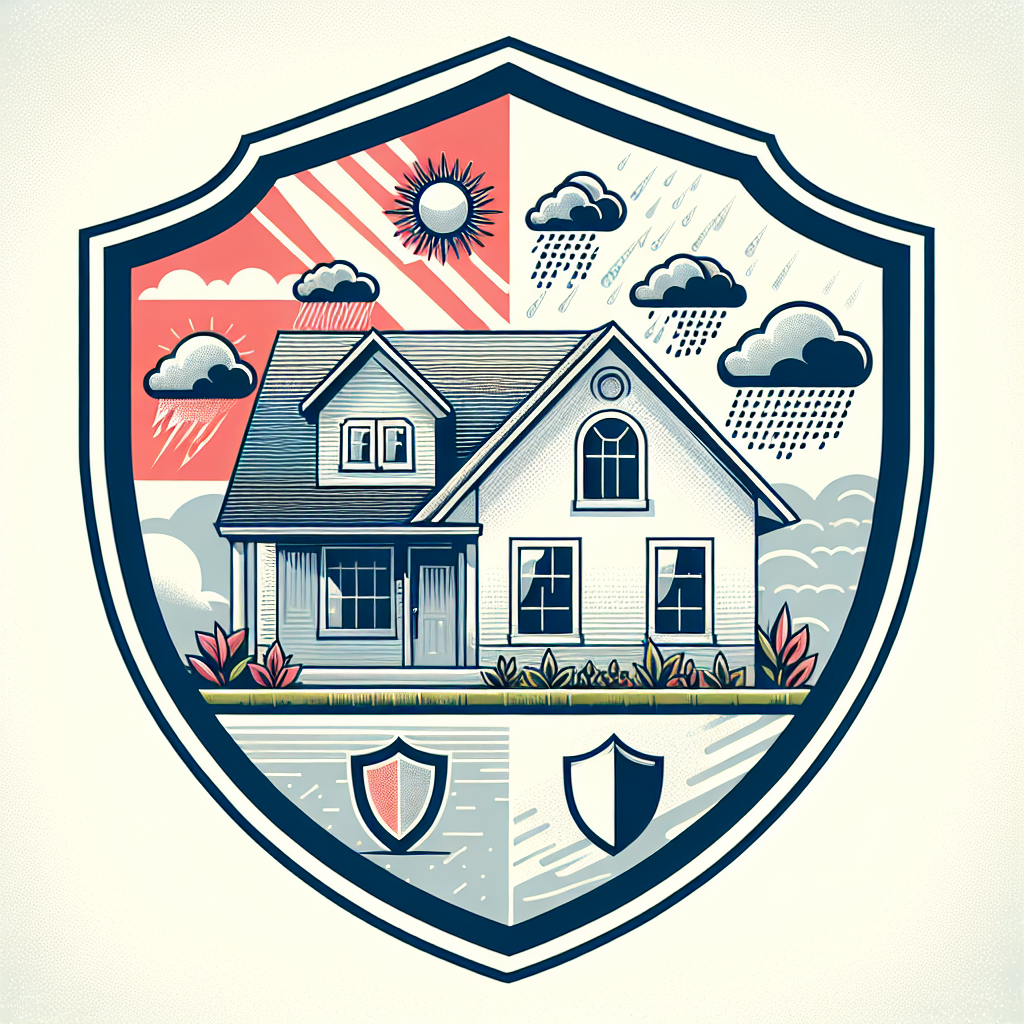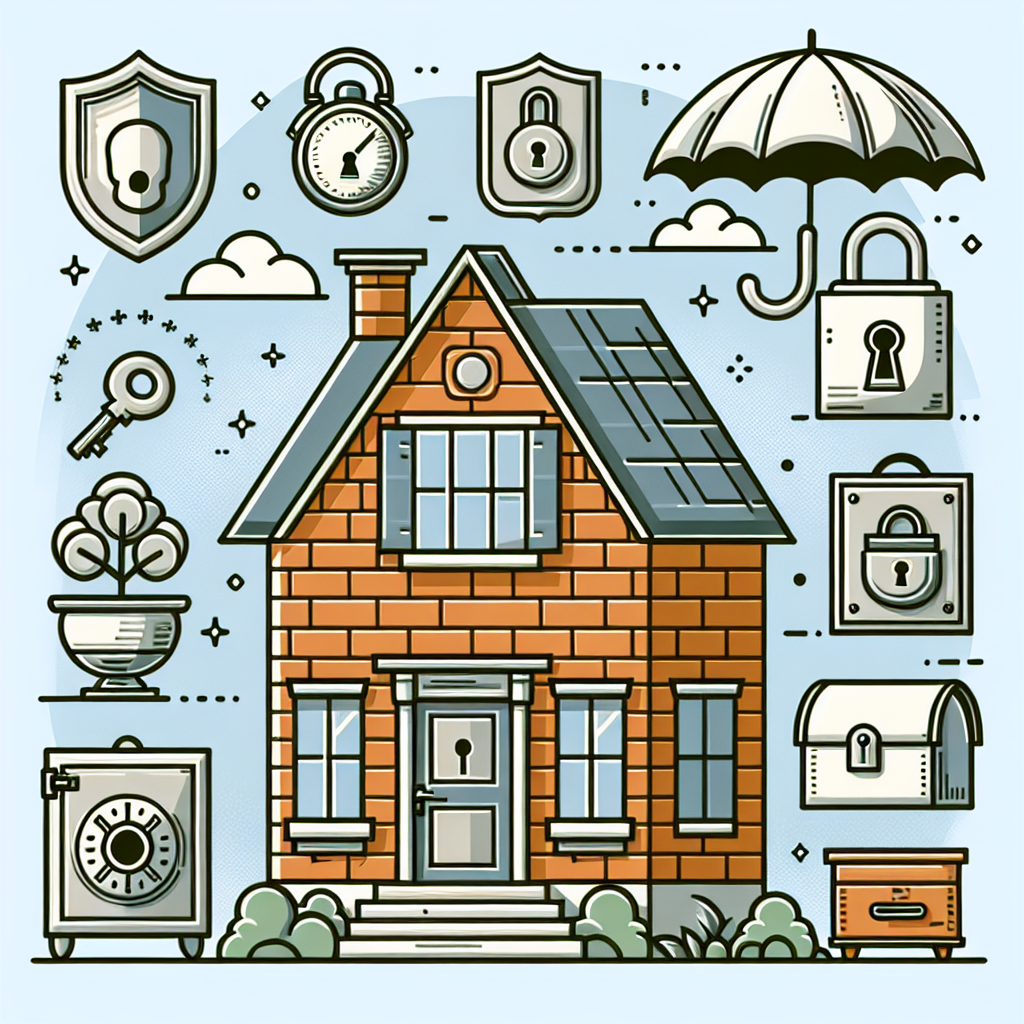Filed under Home Insurance on
NJM Home Insurance Coverage Guide for Homeowners

Home insurance isn’t one-size-fits-all, and knowing exactly what’s in your policy matters long before you file a claim. If you’re evaluating coverage from a regional carrier known for service and value, this guide unpacks what to expect from NJM home insurance, how standard protections work, which optional endorsements are worth considering, and smart steps to tailor your policy to your home and budget.
What Home Insurance Does—and Why It’s Essential
Homeowners insurance is a contract designed to protect your house, belongings, and finances when covered events occur. A well-structured policy helps you rebuild after fire, replace belongings after theft, pay for lodging when your home is uninhabitable, and defend against lawsuits if someone is injured on your property. The right limits and deductibles can also reduce out-of-pocket surprises.
Industry research consistently shows that water damage, wind, and liability claims can be financially disruptive. At the same time, building material costs and labor rates continue to fluctuate, which means your coverage should be reviewed annually to keep pace with inflation and home improvements. NJM home insurance can play a vital role in creating that safety net—especially when you understand the fine print.
Who NJM Is and How It Fits Your Needs
NJM Insurance Group is a regional, policyholder-focused insurer that has expanded from its roots into select states. Many homeowners choose NJM for its straightforward approach, competitive pricing in eligible ZIP codes, and reputation for attentive claims service. Availability and coverage options vary by state and underwriting, so confirm eligibility where you live.
If you’re comparing carriers, you’ll notice that NJM home insurance emphasizes core protections, optional add-ons, and practical discounts. The company’s mutual structure means it’s built to serve policyholders, and that focus often shows up in the claims experience and service touchpoints. While every insurer has strengths, NJM’s blend of value and service makes it a strong candidate for homeowners seeking a dependable policy.
What a Standard Homeowners Policy Typically Covers
A standard homeowners policy (HO-3 or similar) from NJM and many competitors generally includes these core coverages. The names and limits may appear on your declarations page as Coverage A through Coverage F.
Dwelling (Coverage A)
This is the foundation of your policy. Coverage A insures the structure of your home against covered perils (such as fire, wind, theft, and more). The limit should reflect your home’s full reconstruction cost—not its market value. With construction costs rising, it’s prudent to revisit this limit each renewal. Ask about replacement cost estimators and how NJM determines Coverage A to avoid being underinsured.
Other Structures (Coverage B)
Fences, sheds, detached garages, and mailboxes typically fall here. The default is often a percentage of Coverage A (for example, 10%). If you’ve added a sizable detached studio or outbuilding, consider increasing this limit.
Personal Property (Coverage C)
Your belongings—furniture, electronics, clothing, appliances—are covered up to a limit, often set as a percentage of Coverage A (commonly 50% to 70%). Many carriers offer replacement cost coverage for contents, which pays to replace items at today’s prices rather than depreciated value. Confirm whether your NJM home insurance quote includes replacement cost on personal property or if you need to add it.
Loss of Use (Coverage D)
If a covered loss makes your home unlivable, this coverage helps with additional living expenses, such as temporary housing, meals, and extra transportation. It’s a crucial lifeline after large claims. Understand whether the limit is time-limited (e.g., 12–24 months) or tied to a percentage of Coverage A.
Personal Liability (Coverage E)
Liability coverage protects your finances if you’re found responsible for injuries or property damage to others. Limits commonly start at $100,000 but many experts recommend $300,000 to $500,000—especially if you own a dog, a pool, or entertain frequently. If you have significant assets, consider pairing your NJM home insurance with an umbrella policy for higher liability limits.
Medical Payments to Others (Coverage F)
This no-fault coverage pays for minor injuries that occur on your property, regardless of legal liability. It’s typically modest but helpful for small incidents that don’t require a full liability claim.
Common Exclusions You Should Know
No standard homeowners policy covers everything. Knowing the gaps is as important as understanding what’s included.
- Flood: Not covered under standard policies. Consider NFIP or private flood insurance, especially in low-lying or coastal areas.
- Earthquake: Typically excluded but may be available as an endorsement or separate policy.
- Maintenance and wear: Gradual damage, mold from neglected leaks, and routine deterioration are not covered.
- Sewer or drain backup: Usually excluded without a specific add-on.
- High-value items: Jewelry, fine art, and collectibles often have sublimits; scheduled coverage may be needed.
Popular Endorsements to Tailor Your Coverage
Endorsements allow you to customize a policy to your home and lifestyle. Availability and names vary by state; ask an NJM representative which options are offered in your area.
- Water backup and sump overflow: Helps when a drain, sewer, or sump pump backs up and causes interior water damage.
- Equipment breakdown: Extends coverage to major household systems and appliances due to mechanical or electrical breakdown.
- Service line coverage: Pays for underground utility line repairs (water, sewer, power) from your home to the street.
- Scheduled personal property: Itemizes high-value jewelry, watches, cameras, instruments, or art—often with no deductible and broader perils.
- Extended or guaranteed replacement cost: Increases dwelling limits above Coverage A to account for cost overruns during reconstruction.
- Ordinance or law: Covers extra costs to bring your home up to current building codes during repairs.
- Identity fraud expense: Reimburses certain costs related to identity theft recovery.
If you’re doing a major renovation, ask how improvements affect Coverage A and whether permits or inspections affect endorsements. An NJM home insurance specialist can walk you through the best combination of add-ons for your property type and risk profile.
Choosing the Right Limits and Valuation
Getting limits right matters more than shaving a few dollars off your premium. Three choices influence how your policy pays:
- Replacement Cost vs. Actual Cash Value (ACV): Replacement cost pays to repair or replace at today’s prices. ACV subtracts depreciation. Many homeowners choose replacement cost for both dwelling and contents to avoid shortfalls.
- Coverage A Accuracy: Rebuilding a 2,000-square-foot home is not the same as buying a similar home in your neighborhood. Use a reconstruction cost estimator, account for custom finishes, and review annually.
- Sublimits: Categories like jewelry, firearms, silverware, and cash often have low default limits. Schedule any items that exceed them.
To stress test your limits, list your 10 most expensive items and estimate their replacement costs. Then, review local contractor estimates or industry cost guides for a ballpark reconstruction cost per square foot. This quick exercise can reveal whether you need endorsements or higher limits on an NJM home insurance quote.
Deductibles and Wind or Hurricane Provisions
Your deductible is what you pay before insurance responds. Common options range from $500 to $5,000. Higher deductibles lower your premium but increase out-of-pocket risk. In coastal or wind-prone regions, you may see separate percentage deductibles for wind or hurricane (for example, 2% of Coverage A). Before selecting a percentage deductible, calculate the dollar amount and make sure it aligns with your emergency fund.
Practical tip: Match your deductible to your willingness to self-insure small losses. If you can comfortably cover $2,500 out of pocket, a higher deductible can reduce your premium without weakening your catastrophic protection.
How Pricing Works—and How to Save
Home insurance pricing reflects risk: roof age, location, claims history, construction type, and protection features. Carriers also consider credit-based insurance scores where permitted. While you can’t change your location, there are many levers you can pull to lower premiums without sacrificing key coverage.
Discounts Often Available
- Bundle home and auto: Pairing your home policy with auto insurance is frequently one of the biggest savings opportunities.
- Protective devices: Central station fire/burglar alarms, smart water shutoff valves, and monitored leak sensors may reduce premiums.
- Newer roof or updates: Document roof age and major system upgrades (plumbing, electrical, HVAC).
- Claims-free: A clean claims history can help.
- Loyalty, paid-in-full, or paperless: Small discounts that add up.
Ask which discounts apply to NJM home insurance in your state, and confirm any documentation you need to qualify, such as alarm certificates or roof permits.
Risk Trends Every Homeowner Should Watch
Industry organizations like the Insurance Information Institute and CoreLogic continue to highlight rising losses tied to severe convective storms, water damage frequency, and inflation in construction costs. Here’s how those trends affect your coverage:
- Water damage is common: Smart leak detectors, automatic shutoff valves, and regular maintenance can prevent costly losses.
- Roof resilience matters: Impact-resistant shingles and proper flashing reduce wind and hail losses.
- Inflation guard is helpful: Some policies automatically increase Coverage A each year; verify the percentage and adjust as needed.
- Flood risk is evolving: FEMA’s Risk Rating 2.0 changed how NFIP prices flood insurance; even outside high-risk zones, low-cost flood options may be available.
Comparing Quotes the Right Way
To make an apples-to-apples comparison between NJM and other insurers, line up the same coverage structure, limits, and deductibles. Use this checklist:
- Match Coverage A: Use the same reconstruction estimate across quotes.
- Confirm replacement cost on contents: If one quote uses ACV for personal property, adjust it to replacement cost for a fair comparison.
- List endorsements: Water backup, service line, and equipment breakdown can materially change the price and protection.
- Align deductibles: Keep standard and wind/hurricane deductibles consistent.
- Check sublimits: Especially for jewelry and collectibles.
- Review liability: Choose at least $300,000; consider $500,000 if you have higher exposure.
Completing this checklist will help you see the true value of NJM home insurance relative to alternatives instead of focusing on premium alone.
Filing a Claim: What to Expect
If a loss occurs, your experience often hinges on documentation and communication. While specifics vary, many claims follow a similar path:
- Ensure safety first: Address immediate hazards and prevent further damage.
- Document everything: Photos, videos, receipts, and serial numbers help establish value and condition.
- Report promptly: Provide a clear summary of what happened and the date/time.
- Meet the adjuster: Walk through damages, share your inventory, and ask about timelines.
- Keep repair estimates organized: Save contractor bids and invoices.
- Track additional living expenses: Keep receipts for lodging and meals if you’re displaced.
Homeowners who keep a digital home inventory recover faster. NJM home insurance policyholders can ask about preferred contractor networks and digital claim tools available in their state, which may accelerate repairs and payments.
Smart Home Upgrades That Pay Off
Reducing your risk can earn discounts and prevent headaches. Consider these upgrades:
- Monitored leak detection and automatic shutoff valves: Limit water damage from burst pipes.
- Class A or impact-resistant roofing: Improves wind and hail resilience.
- Whole-home surge protection: Safeguards electronics and appliances.
- Sump pump with battery backup: Keeps basements dry during storms or outages.
- Fire safety: Interconnected smoke alarms, CO detectors, and fire extinguishers on every level.
Before you invest, ask if your NJM home insurance policy offers device-related discounts and whether documentation is needed.
Special Considerations for Coastal, Older, or High-Value Homes
Homes near the coast, historic properties, and high-value residences require extra planning.
- Coastal properties: Understand wind or hurricane deductibles and roof requirements. Consider flood insurance even if your mortgage doesn’t require it.
- Historic homes: Reconstruction methods and materials can be expensive; ensure Coverage A reflects true restoration costs and consider ordinance or law coverage.
- High-value homes: Look at higher sublimits, scheduling for valuables, and extended replacement cost on the dwelling.
How to Conduct an Annual Policy Checkup
Schedule 30 minutes at each renewal to review:
- Home improvements: Kitchens, baths, additions, decks—update Coverage A accordingly.
- Inventory changes: New jewelry, instruments, or art—consider scheduling.
- Roof age and condition: Provide documentation for updates.
- Local construction costs: Ask for an updated reconstruction estimate.
- Liability exposures: New trampoline, pool, or short-term rental activity—disclose and adjust limits.
- Discounts and devices: Submit new alarm certificates or sensor installations.
This quick review can surface gaps and verify that your NJM home insurance still matches your needs today.
Frequently Asked Questions
Is flood covered by my homeowners policy?
No. Standard homeowners policies exclude flood. Consider a separate NFIP or private flood policy—especially if your area has any history of flash flooding or heavy rainfall. Even outside high-risk zones, premiums can be modest compared to potential losses.
What deductible should I choose?
Pick a deductible you can comfortably cover in an emergency. Higher deductibles lower premiums, but your savings should justify the added risk. For coastal areas with percentage wind deductibles, calculate the actual dollar amount and decide whether you need an emergency fund to match it.
How are jewelry and collectibles covered?
They’re included under personal property, but sublimits often apply. If your items exceed those limits or you want broader protection (including mysterious disappearance), schedule them. NJM home insurance can typically add a scheduled personal property endorsement—ask about appraisals and documentation requirements.
What’s the difference between market value and reconstruction cost?
Market value reflects location and land value, while reconstruction cost is what it takes to rebuild your home with similar materials and labor. Insurance is based on reconstruction cost. Confirm your Coverage A reflects realistic local building costs.
Will smart home devices reduce my premium?
Often yes, if the devices are monitored and reduce risk—like centrally monitored security, smoke detection, or automatic water shutoff. Share proof of installation to qualify for any applicable discount.
Does filing a small claim raise my rate?
It can. Carriers assess claim frequency and severity. Many homeowners choose to self-insure smaller losses to preserve claims-free discounts. Consider the long-term impact before filing a minor claim.
A Step-by-Step Example: Building a Solid Policy
Suppose you own a 2,100-square-foot home with a finished basement. You request quotes with Coverage A set to local reconstruction costs, replacement cost on contents, water backup at $10,000 for the basement, service line coverage, and $500,000 liability. You choose a $1,500 deductible and add scheduled coverage for a $12,000 engagement ring. You also install a monitored leak detection system and submit the certificate for a discount. That balanced structure focuses your premium on high-severity risks, keeps routine issues self-insured, and targets the most common loss categories in a practical way.
Why Homeowners Choose NJM
Homeowners who prefer a straightforward, value-driven policy often gravitate toward NJM home insurance. The appeal includes:
- Clear, competitive coverage designs for typical homes
- Optional endorsements that address real-world claims (water backup, service line, equipment breakdown)
- Solid reputation for claims handling and policyholder service
- Bundling opportunities when paired with auto for added savings
If these priorities align with your needs, ask for an NJM home insurance quote and review it line by line using the comparison checklist above.
How to Get the Most from Your Premium Dollar
Great insurance blends strong financial protection with practical savings. To maximize value:
- Spend on high-severity protections: Adequate Coverage A, extended replacement cost, and robust liability limits.
- Self-insure small risks: Use a higher deductible for minor losses you can comfortably cover.
- Target common losses: Water backup and leak detection tools address frequent claims.
- Keep documentation current: Appraisals, receipts, and upgrade records support accurate claims and discounts.
- Requote periodically: Market conditions change; verify that NJM home insurance still offers the best fit for your profile.
Key Takeaways
- Match your dwelling limit to reconstruction cost, not market value.
- Choose replacement cost on contents to avoid depreciation gaps.
- Use endorsements judiciously—water backup, service line, and extended replacement cost often deliver high value.
- Increase liability to protect assets; consider an umbrella policy if needed.
- Leverage discounts with smart devices, updates, and bundling.
- Reassess annually as construction costs and home features change.
Final Thoughts
A strong homeowners policy is more than a checkbox for your mortgage—it’s a plan to protect your home, family, and financial life when the unexpected happens. With a thoughtful mix of core coverages, targeted endorsements, and smart risk reduction, NJM home insurance can be tailored to deliver dependable protection at a competitive price. Take an hour to gather your home details, inventory key belongings, and review your options with a licensed representative. That upfront work often pays dividends when it matters most.
Whether you’re buying your first home or fine-tuning a long-standing policy, the steps in this guide will help you confidently evaluate NJM home insurance, avoid coverage gaps, and secure a policy that’s built around how you live today—and how you plan to live tomorrow.




